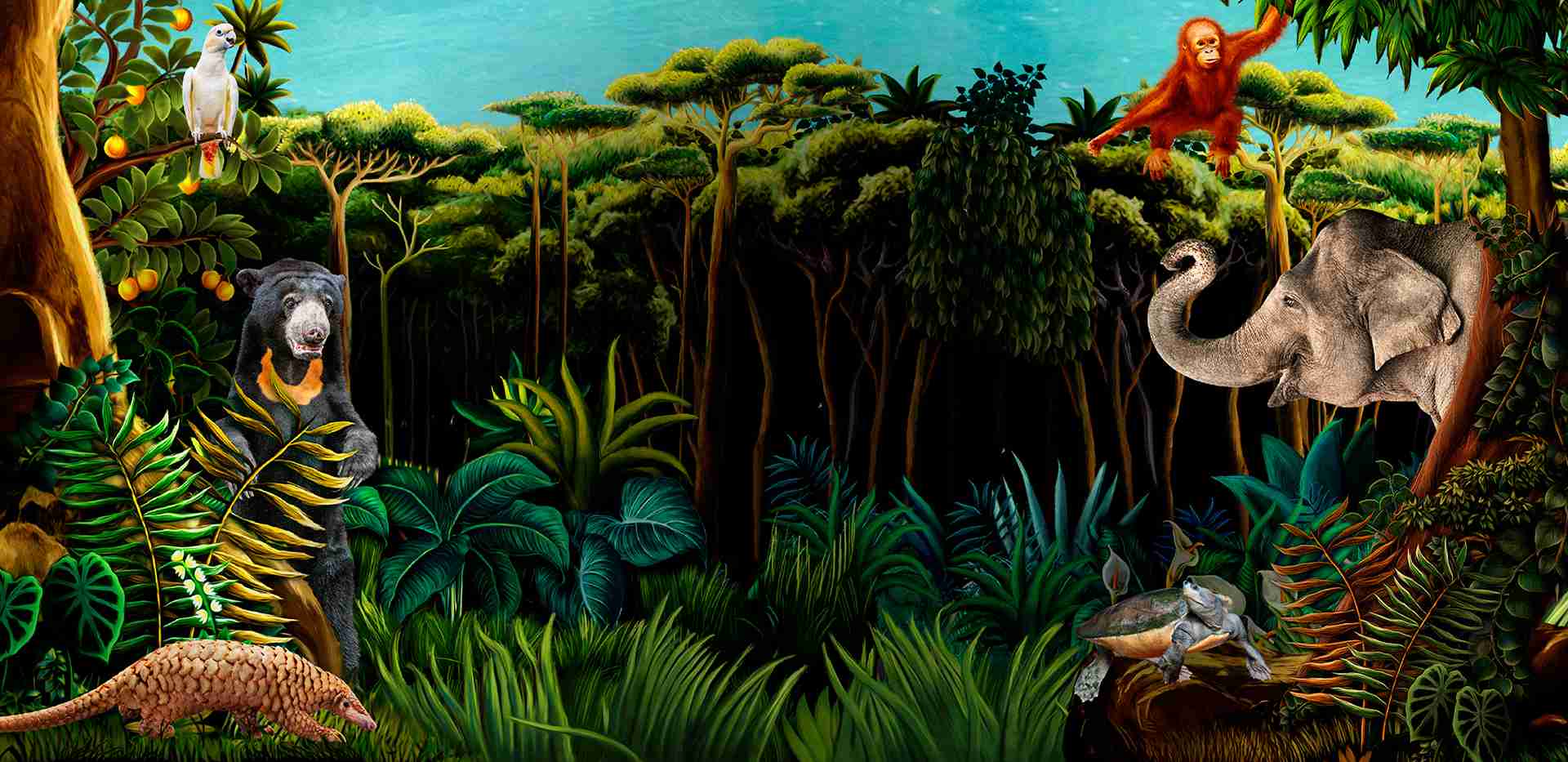Twin joy for Singapore Zoo with red ruffed lemur babies
16 Jul 2020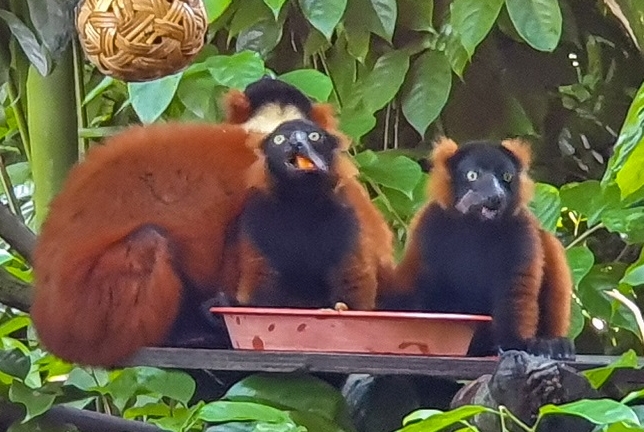
Singapore Zoo welcomed the birth of two red ruffed lemur babies on 22 February 2020 while the Covid-19 pandemic swept across the world. The young tykes are now almost five months old and have begun to welcome visitors, following the re-opening of the Zoo on 6 July 2020.
PHOTO CREDITS: WILDLIFE RESERVES SINGAPORE
The family of critically endangered red ruffed lemurs at Singapore Zoo is often spotted together at mealtimes. The twins now almost equal their parents in size.
PHOTO CREDITS: WILDLIFE RESERVES SINGAPORE
While Bosco is a home-grown boy, his mate, 8-year-old Minnie, hails from Yokohama Zoo in Japan. The couple was specially matched because of their genetic compatibility, by the EAZA Ex-situ Programme (EEP), as part of ongoing conservation breeding efforts between zoological institutions to protect wildlife and biodiversity. EEPs are managed under the European Association of Zoos and Aquaria (EAZA) and Minnie’s arrival in Singapore in 2016 was planned and coordinated on the recommendation of the EEP coordinator.
Reproduction for these rust-coloured primates is notoriously difficult as they only breed once a year. On top of this, females are only fertile for one out of the few days they are sexually receptive, making this twin birth particularly special.
Red ruffed lemurs are classified as critically endangered under the IUCN* Red List of Threatened Species. Native to the north-eastern part of Madagascar, they are a sister species to the black and white ruffed lemurs. Even though the two species do not co-exist in the same geographical range, they are able to understand each other’s calls and communicate. The main threats to the red ruffed lemurs’ population are habitat loss due to illegal logging and hunting. They live together as a family so are often hunted in groups.
About EEPs
The aim of EEPs is to conserve healthy and genetically sustainable populations of animals under human care. The programme coordinates and facilitates exchange of animals between participating zoos with the help of experts of the breeding programme. Each breeding programme has a species coordinator who carefully assesses and plans every transfer to ensure that it is in line with the ultimate goal of this conservation breeding programme—to have a genetically diverse population that can sustain itself and potentially be used to help wild populations in decline if the conditions are right.
* International Union for the Conservation of Nature
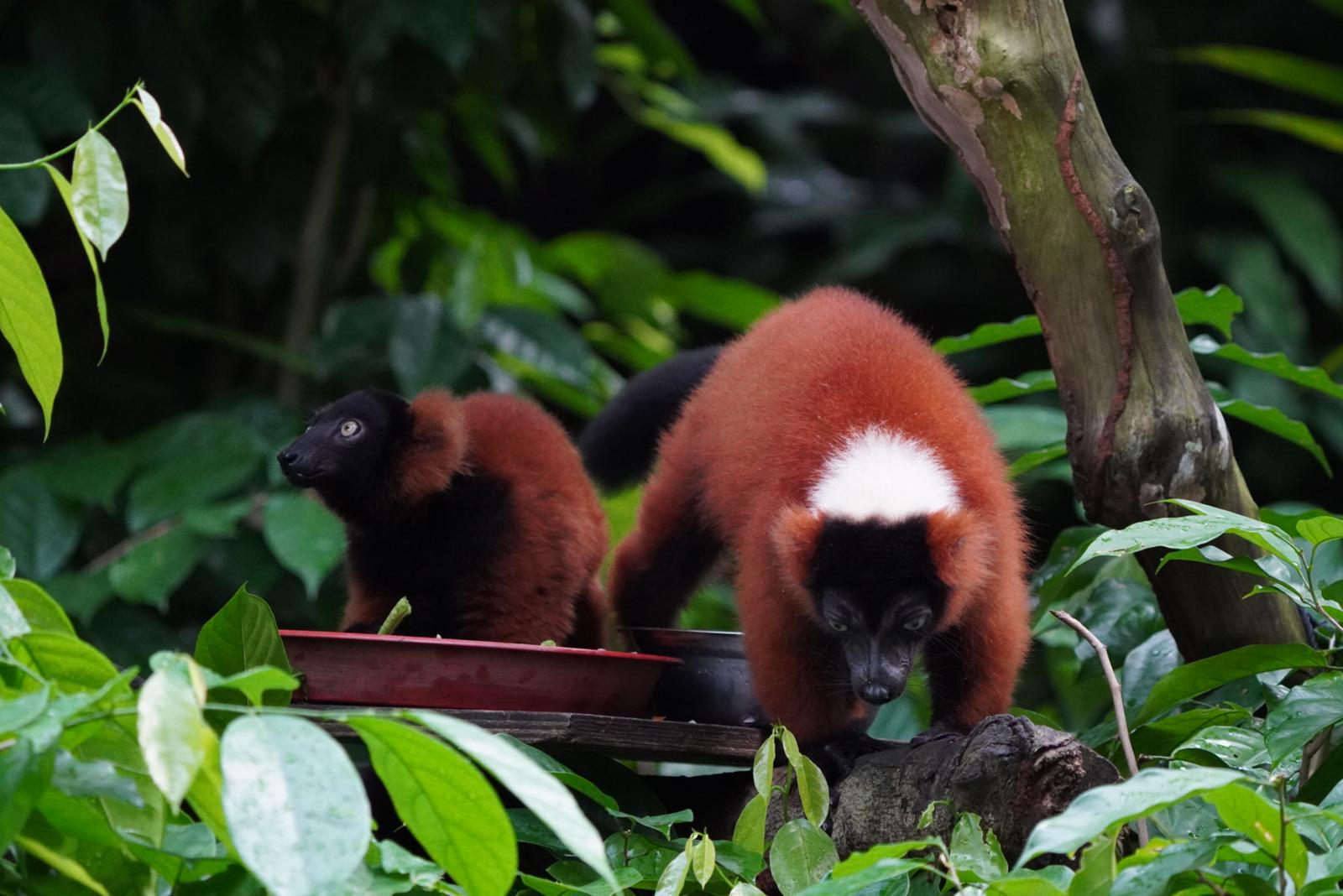
One of the twins (left) enjoys a moment during meal time with mom Minnie. Singapore Zoo welcomed the birth of two red ruffed lemur babies on 22 February 2020 while the Covid-19 pandemic swept across the world. The young tykes are now almost five months old and have begun to welcome visitors, following the re-opening of the Zoo on 6 July 2020.
PHOTO CREDITS: WILDLIFE RESERVES SINGAPORE
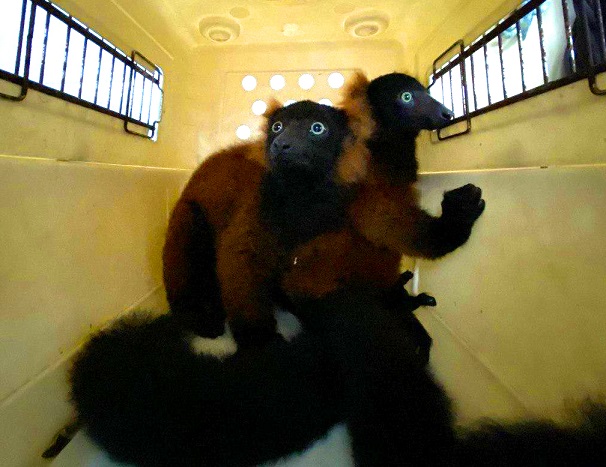
Singapore Zoo’s red ruffed lemur twins were separated from their parents for the first time since their birth on 22 February 2020, when they paid a visit to the animal hospital for their first health check.
PHOTO CREDITS: WILDLIFE RESERVES SINGAPORE
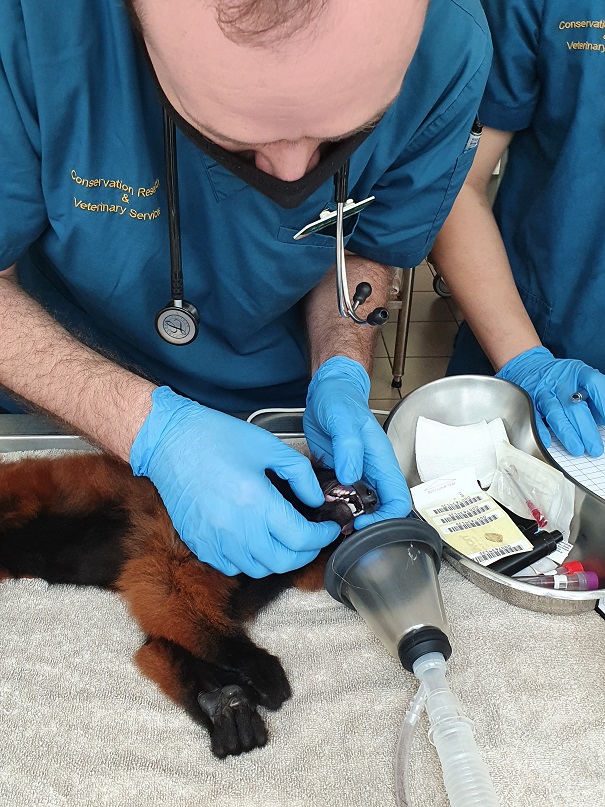
Red ruffed lemurs have six bottom teeth known as a “tooth comb”, which
they use to groom or comb their fur, and to help pull the skin off fruit. Dr
Guillaume Douay, veterinarian at Wildlife Reserves Singapore, takes a closer
look at this unique dental structure of one of the twin red ruffed lemur babies
during its first health check
PHOTO CREDITS: WILDLIFE RESERVES SINGAPORE
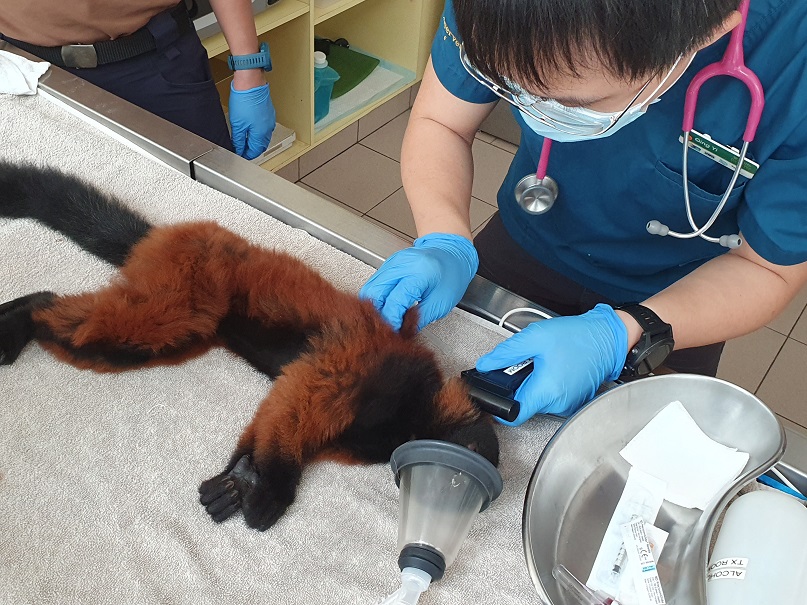
Ng Qing Yi, vet nurse at Wildlife Reserves Singapore, microchips one of
the red ruffed lemur twins, during its first health check. The critically
endangered babies were born on 22 February 2020 as part of a conservation
breeding programme. Microchipping allows for future identification.
PHOTO CREDITS: WILDLIFE RESERVES SINGAPORE
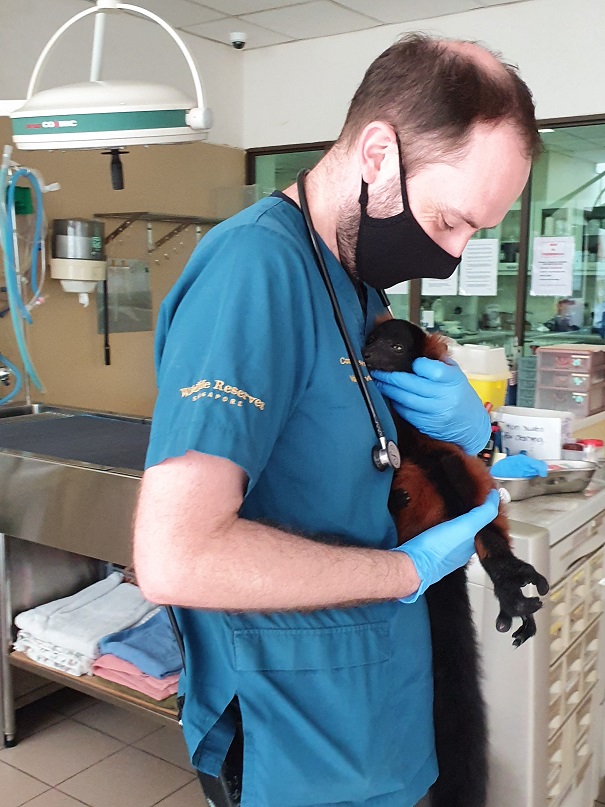
Dr Guillaume Douay, veterinarian at Wildlife Reserves Singapore, carefully cradles one of the sedated red ruffed lemur twins after its routine health check. The babies recovered fully before being sent back to mom and dad on their exhibit at Singapore Zoo. The critically endangered twins were born on 22 February 2020 as part of a conservation breeding programme.
PHOTO CREDITS: WILDLIFE RESERVES SINGAPORE
